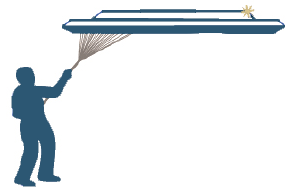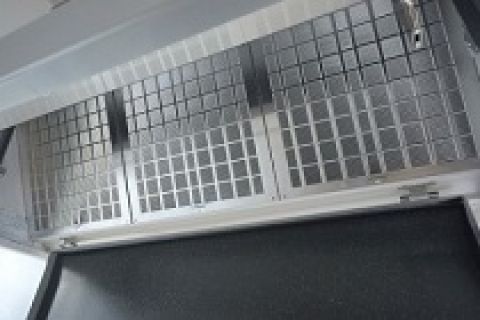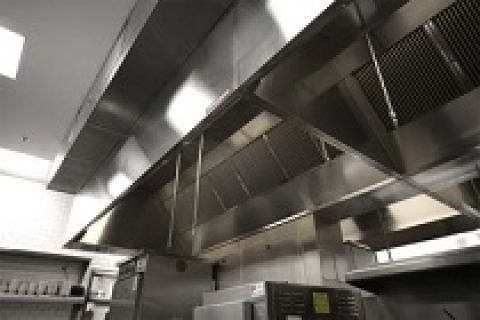FOG Disposal: How to Get Rid of Fat, Oil, and Grease
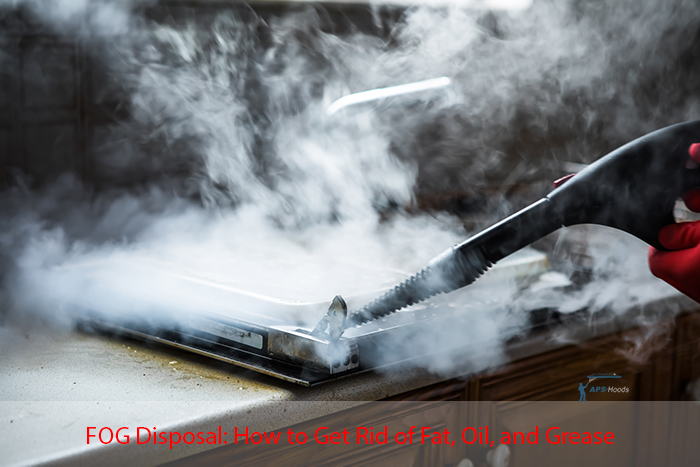
Do you want to avoid FOGgy problems in your restaurant or industrial kitchen? FOG stands for Fats, Oils, and Greases, and they are inevitable by-products of cooking and preparing food. However, they can also wreak havoc on your plumbing system, the environment, and public health if they are not handled properly or recycled. That’s why you need APS hoods, the experts in FOG Disposal and commercial kitchen cleaning.
In this article you will learn where FOG comes from, why it poses problems for your plumbing system, the environment, and public health, how you can prevent and handle FOG issues in your restaurant or industrial kitchen, and who you can contact for professional FOG management and commercial kitchen cleaning services.
FOG is bad news for your kitchen and the planet. But APS hoods can handle your FOG disposal with ease in Denver, CO. You’ll save time, money, and hassle, and enjoy a spotless, secure, and smooth-running kitchen. Don’t miss out on a free quote from APS hoods.
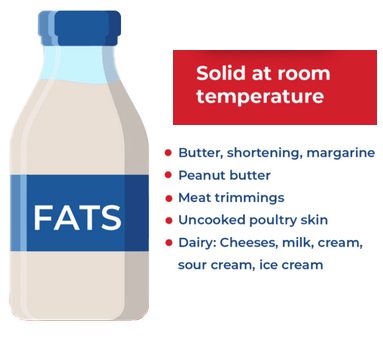
What is FOG?
FOG stands for fats, oils, and greases, which are inevitable by-products of food preparation and cooking in restaurants and industrial kitchens. It can build up in grease traps, which require regular cleaning and pumping to avoid blocking the plumbing system and contaminating the sewer system. FOG disposal can also involve converting it into valuable products, such as biodiesel, by collaborating with an environmental services company.
Common Sources of FOG in Your Kitchen
Most restaurants have a lot of fats, oils, and greases in their kitchens — from the cooking oil that drips on the floor to the sauces that remain on the dishes, and even the burger grease that flies up to the vent hood. Some common sources of FOG in your kitchen are:
• Cooking oil, lard, shortening, butter, margarine, and other fats used for frying, baking, or sautéing
• Dairy products, such as milk, cream, cheese, yogurt, and ice cream
• Meat fats, such as bacon grease, chicken fat, beef fat, and pork fat
• Sauces, dressings, gravy, mayonnaise, and other condiments that contain oil or fat
• Food scraps, especially from greasy or oily foods, such as fried chicken, pizza, burgers, fries, etc.
The Environmental and Financial Risks of Improper FOG Disposal
FOGs, or fats, oils, and greases, are a major threat to your wastewater system if they are disposed of improperly. Because it can harden and accumulate in the sewer pipes, obstructing the water flow and leading to blockages. This can cause sanitaryseweroverflows (SSOs), which are incidents of sewage spilling over your premises, the streets, or the storm drains. SSOs can damage the environment, produce unpleasant smells, and endanger public health by polluting water sources and transmitting bacteria, viruses, and other pathogens. Moreover, it can also be expensive to remediate, and you may incur fines or business closures if you are liable for them.
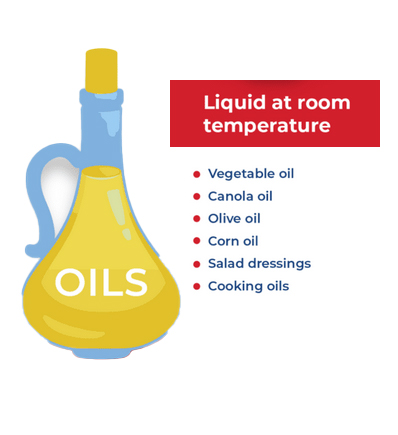
How to Manage FOG in Your Restaurant
To prevent the mentioned problems, you should follow some best practices for FOG management, such as:
• Wiping off dishes, pots, pans, and utensils with a paper towel before washing them
• Collecting waste cooking oil in a container and disposing of it in the trash or recycling it at a designated facility
• Installing a grease trap or interceptor to capture FOG before it reaches the sewer line
• Cleaning and maintaining your grease trap or interceptor regularly
• Hiring a professional collection service to remove and dispose of your FOG waste in a safe and environmentally friendly manner
By following these best practices, you can protect your pipes and the environment, save money, and avoid fines or business closures.
The Benefits of Proper FOG Disposal
Proper FOG disposal can benefit your restaurant and the community in many ways. By preventing blockages in sewer lines, you can avoid backups, overflows, and costly repairs that can damage your property and the environment. By avoiding FOG contamination of storm drains or waterways, you can protect aquatic life and water quality. In addition to this, by avoiding foul odors, pest infestation, and health hazards caused by FOG accumulation in your kitchen or sewer system, you can improve customer satisfaction and loyalty. Moreover, by complying with local ordinances and regulations on FOG management, you can save money and avoid fines or business closures that can harm your reputation and profitability. And also by recycling waste cooking oil into biodiesel or other products, you can generate revenue and support sustainability.
How to Reduce FOG Generation in Your Kitchen
To reduce the amount of FOG, or fats, oils, and grease, you can follow some simple steps:
Step 1
Use less oil or fat when cooking, and choose oils with high smoke points, such as canola, corn, sunflower, safflower, and grapeseed oil. So it will be easier to clean up the FOG that is left behind.
Step 2
Use a strainer or a skimmer to remove excess oil or fat from food before serving or storing it. This will prevent FOG from entering your dishes, pots, pans, and utensils, and reduce the amount of FOG that goes down the drain.
Step 3
Use a spatula or a scraper to remove oil or fat from cookware and utensils before washing them. It will reduce the amount of FOG that is washed into the sink or the dishwasher, and make it easier to wipe off the remaining FOG with a paper towel.
Step 4
Use cold water to rinse dishes, pots, pans, and utensils before putting them in the dishwasher or the sink. Since cold water prevents FOG from melting and sticking to the surfaces.
Step 5
Use a grease trap or interceptor to capture FOG before it reaches the sewer line, and clean and maintain it regularly. Because it prevents FOG from clogging your pipes and causing sewer problems and also helps you comply with local ordinances and regulations on FOG management.
Step 6
Hood and vent systems reduce grease levels in your kitchen by removing airborne grease and pollutants from cooking. Also, regular cleaning and inspection of hood and vent systems can ensure compliance with fire and health codes and efficiency, which prevents fire risks, improves air quality, and lowers FOG (fats, oils, and grease) in sewer pipes.
Step 7
Collect waste cooking oil in a container and dispose of it in the trash or recycle it at a designated facility. This will prevent FOG from entering your sewer system and also help you generate revenue and support sustainability by recycling waste cooking oil into biodiesel or other products.
FOG Disposal: How Thick Layers of Restaurant Grease Are Cleaned
Cleaning services such as APS-hoods take several steps for FOG disposal and grease management:
Step 1: Fan Inspection And Cleaning
We remove the cover and check the blades, the motor, and the belt of the fan on the roof. Then, we scrape off any grease on the fan and dispose of it properly.
Step 2: Duct Cleaning
We use a scraper to remove the solidified grease from the walls of the duct. Then, we collect the grease in a bucket and dispose of it properly. After that, we use a power washer to spray hot water and degreaser on the duct. The pressure and the temperature will be adjusted depending on the amount of grease. Then we use a vacuum to suck up the excess water and grease from the duct and we repeat the process until the duct is shiny and clean.
Step 3: Grease Filter Cleaning
We remove the filters and place them in a soaking tank filled with hot water and degreaser. Then, we let the filters soak for about 15 minutes, and after that rinse them with the power washer.
Step 4: Oven Hood Cleaning
We spray the hood with a degreaser and wipe it with a cloth. Then the lights, the switches, and the pipes are also cleaned.
Step 5: System Testing
Finally, we put everything back in place and then we will test the fan to make sure it’s working properly.
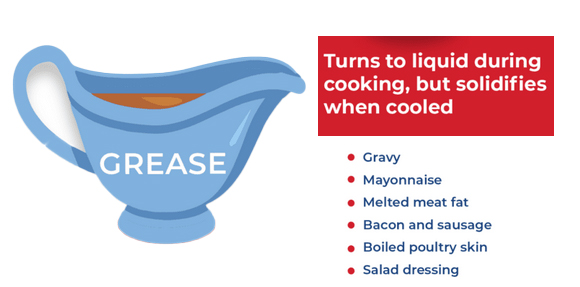
APS-hoods follows the local regulations and guidelines for FOG disposal and help you prevent fires and protect lives. Call us now for a free quote and a consultation.
For more information, watch the procedures of FOG disposal here.
The Inspection and Enforcement Procedures for FOG Disposal
To ensure FSEs (Food Service Establishment) follow the FOG control rules, local authorities or sewer operators inspect and enforce FOG disposal in commercial kitchens. These procedures may differ by FSEs’ location and jurisdiction, but they usually include:
- Inspection:
They check FSEs’ FOG equipment, practices, records, and reports regularly. The inspection details depend on FSEs’ risk, violation, and resource factors. They use tools to record their findings and suggestions.
- Enforcement:
They take action against FSEs who break the FOG control rules. The actions’ kinds and levels depend on the violation’s type and size, the sewer and environmental harm, and the non-compliance record. The actions may include notices, fines, penalties, orders, injunctions, or permit cancellation.
Regulations and Compliance for FOG Disposal
FOG management is vital for reducing the environmental and public health hazards of FOG discharges into sewers. And it is governed by various laws and standards, depending on the FSEs’ jurisdiction and location. Hence, FSEs should check with their local authorities before disposing of their FOG waste. Some of the common regulations and compliance for FOG disposal are:
- Environmental Protection Act
- General Permit for the Discharge of Wastewater Associated with FSE
- FOG Legislation
- FOG Best Management Practices Manual
The Common Violations and Penalties for FOG Disposal
Common FOG disposal violations and penalties are:
• Discharging FOG that harms the sewer or POTW (Publicly Owned Treatment Works)
• Failing to use or keep grease control devices as per local rules
• Failing to keep FOG records, such as cleaning, invoices, manifests, and reports
• Lying or hiding FOG information
The consequences of these violations can range from notices, fines, penalties, orders, injunctions, or permit loss to criminal charges under RCRA (Resource Conservation and Recovery Act).
FAQs About FOG Disposal
How Can I Collect and Store FOG Safely and Efficiently in FOG Disposal?
To collect and store FOG safely and efficiently, use a labeled container with a lid, store it in a cool, dry, and secure place, then contact a licensed FOG hauler or recycler regularly, and do not pour FOG down the drain.
How Can I Dispose Of Grease And Meat Grease From Dishes And Utensils?
You can dispose of grease and meat grease from dishes and utensils by scraping or wiping them off with a paper towel or a balm cleansing product before washing them. Also, you can use a sink strainer to catch any food scraps or solids that may contain grease and throw them in the trash or compost bin.
How Can I Get Rid of Bacon Grease or Cooking Oil in My Kitchen?
Don’t drain FOG. Instead, cool and solidify it. Then scrape or wipe it off with a paper towel or a balm cleanser. After that use a sealable container and trash to collect it or recycle it. You can also reuse it for cooking.
FOG Disposal: How to Select a Trustworthy and Accredited FOG Hauler
FOG disposal, or grease waste disposal, is an important aspect of running a restaurant or industrial kitchen. It affects not only your plumbing system but also the environment and public health. By following the best practices, regulations, and compliance for FOG management and disposal, you can avoid problems such as sewer blockages, overflows, fines, and business closures. You can also benefit from recycling waste cooking oil into biodiesel or other products. APS hoods can help you with FOG disposal and management and commercial kitchen cleaning, so you can focus on your core business. Contact us today for a free quote and see how we can make your kitchen cleaner, safer, and more efficient.
